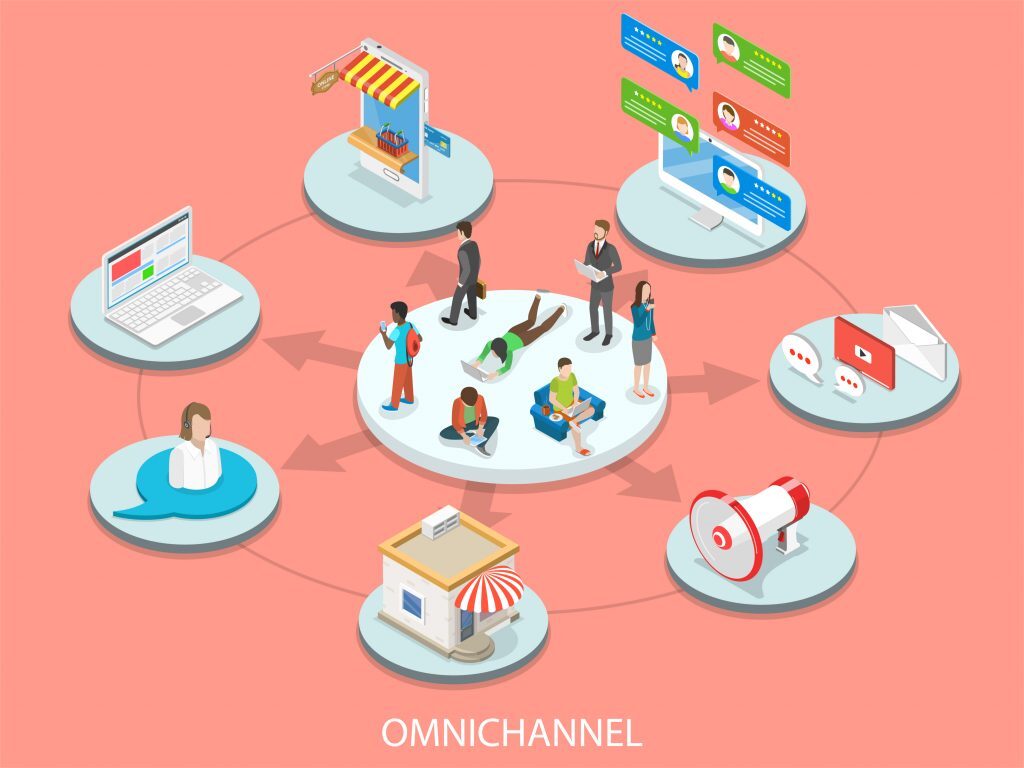Today's consumers are constantly moving across channels and devices, which means companies have to move with them by adopting an omnichannel strategy. If you're a retailer, you want a customer to be able to find a product on Instagram, buy it on their phone, pick it up at a brick-and-mortar store, and call a support line if something goes wrong. Just as importantly, you want to have a single view of this customer that tracks all interactions across digital and physical channels.
Being able to provide a robust omnichannel experience increases your brand's visibility, improves customer service, and gives you rich information about your customers. As consumers grow more accustomed to seamless interactions with brands, and as the pandemic forces every retailer to reach the market in new ways, an omnichannel approach isn't just an advantage, it's an essential survival strategy.
Defining Omnichannel Retail
Omnichannel retail means providing multiple avenues through which your customer can interact with your brand through marketing, purchasing, and ongoing customer service. In an omnichannel approach, your social media campaigns, emails, mobile apps, website, physical stores, and telephone helplines all provide seamless customer experience, supporting one another with as little friction as possible.
Omnichannel vs. multichannel
Marketers often contrast omnichannel retail with a multichannel approach, and the distinction is useful in designing an effective strategy. In a multichannel strategy, you can make use of the same number of platforms (mobile, web, physical), but they're disconnected or even working at cross-purposes with one another. The difference between omnichannel and multichannel retail is seamlessness — ensuring that a customer may switch devices but remain on a single journey.
Your web team may be incentivized to dominate the purchasing process in a multichannel approach, circumventing your physical stores. But an omnichannel strategy uses physical stores as assets, directing customers to pick up or return their orders in person. This enables tighter inventory control, makes better use of your existing infrastructure, and, of course, increases the likelihood that the customer will make additional purchases while they're in your store.
The key to achieving this synergy is to maintain a single view of the customer across channels and make that data easily accessible, not siloed by different teams.
Business Impacts of an Omnichannel Strategy
Omnichannel is already a fact of life for most customers, if not businesses. McKinsey's research found that over half of customers used between three and five channels to purchase or resolve an issue. According to Harvard Business Review, omnichannel customers spend 10% more online and 4% more in person than shoppers who use only a single channel.
The push toward omnichannel had been gaining momentum for years, but in 2020, the pandemic kicked this trend into overdrive. Ecommerce platform Kibo reported that in the early months of the pandemic, their clients reported a 563% increase in Buy Online, Pickup In-Store (BOPID) orders. That dramatic spike has subsided somewhat in the summer, but it's likely many customers who have adopted these habits during the pandemic will incorporate them into their shopping once the crisis is over.
Increased in-store sales
Adding digital touchpoints to physical stores has a measurable impact on sales. With endless aisle technology, customers browsing a store can use a touchscreen or their phones to order products that are out of stock or that are preferred in a different style/size/color. Giving customers this ability can reduce "showrooming," in which customers see an item in person and then go online to buy it from the cheapest seller. Putting this technology in the hands of your sales associates can also boost revenue. McKinsey found that one retailer increased its customers' average basket size by 5% when they gave their in-store salespeople a tablet equipped with a sales-assist tool.
An omnichannel strategy can also facilitate "reverse showrooming"— advertising your products online to encourage in-store visits. Ulta Beauty, Target, and Home Depot all posted revenue increases, which the retailers credited to their strategy of driving e-commerce buyers to physical stores.
Improved customer experience
Today, providing a personalized and frictionless customer experience is a key competitive advantage for retailers. PwC research found that a third of customers would abandon a brand they love after a single bad experience. On the flip side, 63% said they would be willing to share more information with companies that provided great experiences.
In practice, providing great experiences means providing human interaction when customers want it, and frictionless self-service the rest of the time. Customers don't want to have to call a customer service rep just because they've forgotten their password; they want to click a button and handle it themselves. But if an online order is never delivered, customers should be able to speak to a human being. A sound omnichannel strategy understands the customer well enough to put each of these common issues in a separate funnel. The lost password customer doesn't need or want a human interaction; in fact, it will frustrate them. But the customer with a lost package needs to receive more personal attention, not be passed onto a chatbot.
Email is a cornerstone of many companies' omnichannel strategies and can be a critical way to provide unobtrusive customer service. Asking for feedback via automated (but personalized) follow-up emails helps personalize your brand and ensure that unsatisfied customers aren't falling through the cracks.
Key Elements of a Successful Omnichannel Strategy
More retailers are ramping up omnichannel investments, but unless these are guided by a coherent strategy, the result is chaos. Omnichannel efforts don't pay off if businesses try to do everything at once and give equal weight and attention to every channel. Instead, retailers must make data-driven choices about reaching customers.
Three principles form the bedrock of every successful omnichannel strategy:
- Find customers where they are. This boils down to knowing your customer and tailoring your message and channel to their needs and tastes.
- Direct customers toward the most appropriate funnel for their needs, in as few steps as possible. This means you might advertise a product on Instagram but provide a link that takes them directly to a cart instead of your website's home page. By the same token, it means dividing service requests by those that do require human interaction and those that do not.
- Maintain visibility of the entire process, and use it to inform your future decisions. Every interaction at every touchpoint should be logged and fed into a single, central user profile. This can be accomplished with loyalty programs or incentives to share personal information with sales associates for in-store visits.
An identity and access management (IAM) system can help deliver on these three principles by connecting all your channels. A sophisticated IAM system lets you lower friction, starting at the log-in box. With single sign-on (SSO) and social log-ins, customers can log in quickly without filling out forms or having to create a new password. That's good for everyone because customers are happier and less likely to walk away from a transaction.
The current generation of cloud-based "identity as a service" (IDaaS) providers are designed to integrate across channels. So when a customer uses a loyalty card for an in-store purchase, calls a customer service agent for support, or orders a product on a desktop, your IAM platform will log all these interactions and feed them back into a central user profile. This lets you provide more personalized service across all channels because each one benefits from the knowledge of the others.
Don't Let Your Customers Leave You Behind
Your customers are already leading omnichannel lives. A millennial shopper expects to see patio furniture on a Facebook ad, purchase it with just a few clicks, instantly receive an email letting them check the order status, and have it delivered the next day from the local store. Each part of that transaction feels intuitive, but it's the result of a complex system working in harmony. Getting your omnichannel strategy right takes careful planning, but the rewards are higher sales, improved customer loyalty, and greater alignment across your company.
About Auth0
Auth0 by Okta takes a modern approach to customer identity and enables organizations to provide secure access to any application, for any user. Auth0 is a highly customizable platform that is as simple as development teams want, and as flexible as they need. Safeguarding billions of login transactions each month, Auth0 delivers convenience, privacy, and security so customers can focus on innovation. For more information, visit https://auth0.com.
About the author

Martin Gontovnikas
Former SVP of Marketing and Growth at Auth0 (Auth0 Alumni)
Gonto’s analytical thinking is a huge driver of his data-driven approach to marketing strategy and experimental design. He is based in the Bay area, and in his spare time, can be found eating gourmet food at the best new restaurants, visiting every local brewery he can find, or traveling the globe in search of new experiences.View profile



